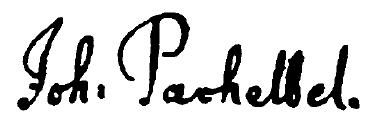One of the most popular and beloved pieces in all of Classical music is the beautiful Canon in D by Johann Pachelbel, made famous in our time by its use in a recording in 1969 and a film in the 1970s.
With its repeating chords, diatonic (do-re-mi scale) nature, and interesting lyrical melody, it seems like a perfect candidate for a hammered dulcimer arrangement.
But the original version includes 1) a repeating ostinato bass that starts over every eight measures; 2) a chord continuo part that repeats in the same way; and 3) three melody instruments that play exactly the same part but starting at different times, thus making it a long ‘round’ --- a canon!
To play all those parts in their original way would require at least five instruments, not just a single hammered dulcimer with two hammers. I know of one Asian dulcimer ensemble that has performed it on six dulcimers plus a guitar --- you can watch it on Youtube.
But I wanted to play it solo! So I decided to see if the repeating chord series and some melody elements could be crafted into a ‘Fantasia’ version that said somewhat the same thing musically without having to be an actual canon with all those overlapping parts.
As I experimented with ideas, the development of the music’s theme became a string of nine episodes in which each passes through the chord series using a different technique, or as a restatement of a previous section but with some kind of modification. As I’ve done with a lot of my arrangements, I leave various sections open for improvisation and melody revision on the fly, to keep it fresh and present!
When I posted one performance of this on Youtube, it quickly became my most viewed video, probably because of its title! But people do seem to like my version, as one can see in the comments.
And a number of people have requested sheet music. I don’t like to think in terms of sheet music, but rather like to make my own arrangements at the dulcimer, letting the freedom of the moment form a lot of the musical results, and i encourage other players to do the same --- but in some cases I’ve gone ahead and worked out a score for those who request it.
The score for this is attached below in pdf format, if you’d like it. I based it on exactly what I played that time in the Youtube video. (It's accurate as to pitches and timing, but with no other markings --- please make your own decisions on volume, phrasing, etc.)
Note that the nine sections take this form: 1) four-note chord rolls with slow arpeggios following each; 2) the most famous melody section; 3) a more contemporary-style improv with ragtime-like separated hands; 4) double-speed right hand in a similar pattern; 5) the same right hand but a more spare left hand; 6) dropping back to slow, low-pitch arpeggios; 7) doubling the speed of those arpeggio ideas; 8) fast zig-zag arpeggios; 9) a return to the ragtime rhythm.
This length and this series of episodes seem to sit well with the new development of this originally Classical idea, in such a way that it moves my own soul as I play it, and at times the souls of listeners! If you’re a hammered dulcimer player looking for a way of playing the Canon, perhaps this can be a jumping-off point!





Comments